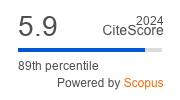Article | Open Access
Reach or Trust Optimisation? A Citizen Trust Analysis in the Flemish Public Broadcaster VRT
| Views: | 4106 | | | Downloads: | 2849 |
Abstract: In democracies, one of Public Service Media’s (PSM) main roles is to inform the public. In a digital news ecosystem, where commercial, citizen, and alternative news sources have multiplied, questions about the ability and need for PSM to fulfil this role are increasingly being raised. While the role of PSM can and should be scrutinized, a too-narrow a focus on an informed citizenry may obfuscate aspects, other than audience reach and objectivity, that are key to this information role, such as trust. Against this background, this article studies whether and to what extent citizens still trust the news and information services of their public broadcaster, asking if that trust is still high, whether there is a difference between groups in the population, and if trust is in line with reach. Based on a representative survey of news users in Flanders, the Dutch-speaking community of Belgium, the article studies the reach and trust scores of the brands of VRT, Flanders’ PSM, and compares them to those of its main competitors, with a specific focus on differences in terms of age, education levels, and political orientation. The results suggest that VRT struggles more than the main commercial players to reach young people and the lower-educated, but still leads when it comes to trust. The data show the continued importance of widening our assessment of PSM beyond market-focused indicators of reach.
Keywords: audiences; Belgium; disinformation; media policy; media trust; informed citizenry; social stratification; policy assessment; political orientation; public service media
Supplementary Files:
Published:
© Ike Picone, Karen Donders. This is an open access article distributed under the terms of the Creative Commons Attribution 4.0 license (http://creativecommons.org/licenses/by/4.0), which permits any use, distribution, and reproduction of the work without further permission provided the original author(s) and source are credited.


